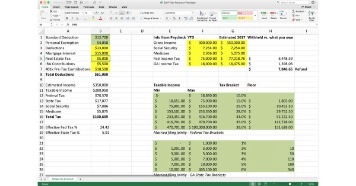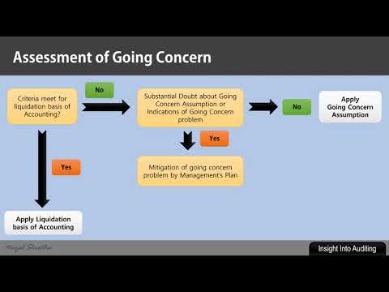For example, someone can characterize anything they bought as “a variety of products.” The items, in this case, are diverse and not necessarily related. You can settle international invoices, and pay suppliers, contractors and staff worldwide – all at the mid-market exchange rate. General expenses usually involve larger sums, and have regular, predictable timing. They tend to include things like salaries, travel costs, marketing expenses and purchases of raw materials.
As a result of this, companies need to provide an accurate accounting of their miscellaneous income within their financial records. Sundry expenses are shown on the expenses side (left) of a profit and loss account (Income statement). Size, industry practice & nature of an expense plays an important role to determine whether it should be included in sundries or be given a separate ledger account. T Shoes incurs many expenses that easily fit into categories like employee wages, rent, loss on product defects, and the list goes on. While seemingly minor, sundry expenses and income are integral to financial management.
What are Sundry Expenses?
It is frequently used as a general term to refer to various products that are difficult to classify or describe. The term is frequently employed when discussing goods that are difficult to categorize or separate. This means less time worrying about expenses and bookkeeping, and more time to focus on growing your business. So, even if you’re just making a one-off charity donation or buying decorations for a staff Christmas party, you still need to make sure you’re tracking all expenses. To better illustrate what qualifies as a sundry expense, here are a few examples.
- The word “Sundry” is used for items which are irregular and insignificant to be listed individually.
- If there are certain types of sundries that keep popping up again and again, they’re no longer irregular.
- Accounting for them is vital because, over a fiscal year, even very negligible expenditures can mount up to a significant sum.
- GoCardless helps you automate payment collection, cutting down on the amount of admin your team needs to deal with when chasing invoices.
Mistakes in handling these can lead to inaccurate financial reporting and missed opportunities. By being aware of common errors and implementing best practices, individuals and businesses can successfully navigate the complexities of sundry accounts. Emphasising the understanding of sundry expenses, their examples, and proper management ensures a complete and transparent financial picture that contributes to sound financial health. Therefore, in addition to being recorded as a credit in one account, the miscellaneous revenue will be recorded as a debit in another account. Businesses must also account for earnings from various sources in their financial statements and balance sheets since several types of revenue might influence a company’s overall value. If you are confident that you can assist businesses in accurately recording their various expenses, consider beginning an accounting business.
What is Sundry Expenses Example?
This is especially likely when a firm has a large number of line items on its income statement, and needs to condense the presentation. Now with ERPs and modern computer systems, the need to reclass dozens of small expenses as sundry expenses has been greatly reduced. Even though the word gives the impression that each revenue stream is relatively insignificant, a company might earn enormous amounts from various funds.
They may be small and irregular, but sundry expenses must still be recorded on your financial statements. When drawing up your general ledger or profit and loss account, you can report sundries on the expenses side of the chart. Small businesses can probably just list them as a single line item under expenses, while larger businesses might need to create a designated sundry account in the ledger. These are small, random expendituresthat don’t happen very often and are typically unusual in nature.
Sundry Expenses
It is also critical to ensure that all incidental expenses are genuine and required for the regular operation of the business. They are comparatively small, miscellaneous in nature & can not be classified under a specific day-to-day expense ledger. If any of the items recorded in Sundry Expenses begin to occur frequently and/or become significant, a new account should be opened for such items. For the past 52 years, Harold Averkamp (CPA, MBA) has worked as an accounting supervisor, manager, consultant, university instructor, and innovator in teaching accounting online. Shaun Conrad is a Certified Public Accountant and CPA exam expert with a passion for teaching. After almost a decade of experience in public accounting, he created MyAccountingCourse.com to help people learn accounting & finance, pass the CPA exam, and start their career.
The word “Sundry” is used for items which are irregular and insignificant to be listed individually. Sundry expenses are costs incurred during business operations that are not listed separately because they are usually small, rare, and do not relate to other general expenditures. As mentioned above these types of expenses do not usually have a separate ledger account however they can be grouped together and clubbed together as sundry expenses.
None of these expenses are planned for, nor do they fit into the usual expense accounts. If your business doesn’t already have a miscellaneous expenses account or petty cash, a sundry account would be a good place to record them. Accountants then account for the sale of land, stocks, bonds and other investments as revenue for the miscellaneous account. A business might elect to combine several minor expense accounts and report them in aggregate in a Sundry Expenses line item.
If you’re starting a business or getting to grips with bookkeeping for the first time, you’ll need to understand the different types of business expenses. They do it to guarantee that they document all income and expenses accurately and fairly, providing a more comprehensive picture of the organization’s overall financial performance. Recording accounts payable software expenses is an important part of business bookkeeping, but what do you do with the odd ones that don’t seem to fit into any category? The sundry account might be the best place for miscellaneous expenses like these. We’ll define sundry below and explain how this catch-all term can help you better categorize your smaller expenses.
In this handy guide, we’ll cover all the essentials you need to know about sundry expenses. This includes exactly what is a sundry expense (and what isn’t) and the importance of registering these costs properly https://www.quick-bookkeeping.net/difference-between-internal-audit-and-external/ in your ledger account. To keep the double entry system intact, if the miscellaneous income came from rent payments, accountants first subtracted that amount from the income statement’s rental income account.









